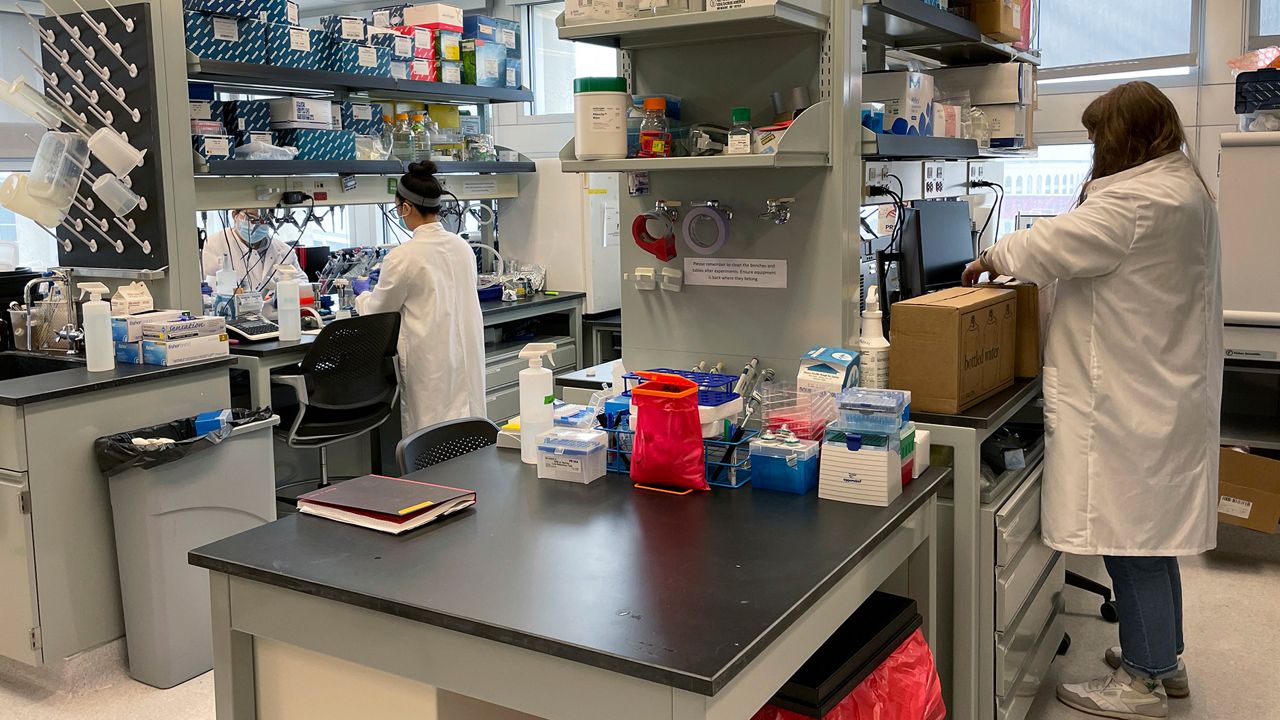COLUMBUS, Ohio — As COVID-19 cases continue to rise in Ohio, the state’s two largest counties, Franklin and Cuyahoga, rank among the top 10 for case rates, according to state data.
What You Need To Know
- Several of Ohio's largest counties rank in the top 10 for case rates in the state
- Ohio's COVID cases have increased for three consecutive weeks, state data shows
- Virus hospitalizations are still near the lowest levels since the pandemic began
The state reported 6,890 cases in a weekly update Thursday, the third consecutive weekly increase since an April 1 report of 3,103 weekly cases. But to put it in perspective, Ohio was reporting more than 20,000 cases per day during the peak of the omicron surge.
Dr. James Gaskell, health commissioner with the Athens City-County Health Department, said cases are likely rising in part because very few people in Ohio are wearing masks, and he said the variance in case rates between Ohio counties likely relates to the degree of progression of the BA.2 subvariant.
Beyond Cuyahoga County, four other northeast Ohio counties rank in the top 10 for case rates — Summit, Lorain, Lake and Ashtabula counties. The map below shows Ohio’s case rates per 100,000 residents over the last two weeks:
Athens is reporting the highest case rate of Ohio counties following a recent spike. Cases were hovering around 20 per week in Athens in early April, but that increased this week with the county reporting 80 weekly infections on Thursday, Gaskell said.
“We've jumped considerably in a short period of time,” Gaskell said, explaining that he was surprised by the spike.
In Athens, like everywhere else in Ohio, Gaskell said case reporting is increasingly an underrepresentation of the true number of infections.
“I think there's a lot of home testing going on, and not much of that gets reported to us,” he said. “The testing is being done privately and at home. They're supposed to report those positive tests to us at the local health department, but we're not terribly confident that all that happens.”
Gaskell said he thinks most people who test positive with home tests are following the federal guidance — quarantining for at least five days and wearing a mask for another five after that. Cases are also an under-count because virus patients are asymptomatic more frequently than with earlier variants, he said.
On Friday, 315 patients were hospitalized with COVID-19 in Ohio, while 46 were receiving ICU care, according to the Ohio Hospital Association. The ICU numbers remain lower than they were in any previous month of the pandemic.
Local hospital officials told NBC4 there were zero COVID-19 patients on ventilators in central Ohio on Thursday.
Initial data from Europe shows BA.2 is about 30% more contagious than BA.1, the original omicron strain, Gaskell said, but the subvariant appears to be even less virulent than BA.1.
“It’s a milder disease even than BA.1, which BA.1 was much, much milder than delta. Delta was a real killer. Delta resulted in many hospitalizations, more deaths, children were getting infected with delta, and we had some children dying from delta. Not so for omicron — much less so for omicron,” he said.
While Gaskell said the low rate of severe disease gives him optimism that we can live with COVID-19 without restrictions, he said he worries about the resistance from the public that would come if COVID gets to a point where health officials want to reinstate mask mandates.
“I think it'll be very hard to get people to mask up again,” he said. “Society has tired of this whole pandemic.”







